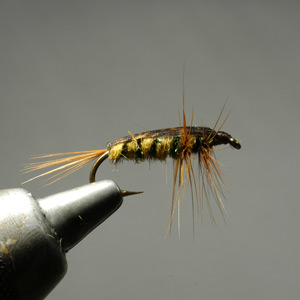 My friend Walter Babb said that most people’s favorite fly is the fly they happened to have on the first day the fishing was really good. The implication of his statement is that more often than not, it’s the archer, not the arrow. Most of the time, if your fly is presented well and the fish are feeding, it probably doesn’t matter what fly you have on. And if the fish aren’t feeding? It probably doesn’t matter what fly you have on!
My friend Walter Babb said that most people’s favorite fly is the fly they happened to have on the first day the fishing was really good. The implication of his statement is that more often than not, it’s the archer, not the arrow. Most of the time, if your fly is presented well and the fish are feeding, it probably doesn’t matter what fly you have on. And if the fish aren’t feeding? It probably doesn’t matter what fly you have on!
But since you happened to have that fly on the first day the fishing was good, you have confidence in it. Now it’s the first fly you put on and you leave it on longer. I have countless fly patterns that I abandoned because they didn’t catch fish the first time I tried them, but often that first time was after I tried everything else. Nothing was working that day!
With all of that said, I have, by far, caught more big brown trout in the Smokies on a Tellico Nymph than any other fly. But, you guessed it… the first big brown trout I caught in the Smokies was on a Tellico Nymph. I have confidence in it. And since most of the big browns I’ve taken over the years were either spotted first or caught during “favorable brown trout conditions,” I’d put a Tellico on in anticipation. So, it’s a bit deceiving. Who is to say I wouldn’t have caught those fish on a Prince Nymph had I chosen to tie one on?
Nevertheless, the Tellico Nymph is a good fly and it’s been around a long time. Its exact origins are unclear, though it was thought to have, obviously, been initially created and fished on the Tellico River in East Tennessee. It has definitely been around since the 1940’s, but some estimate that it may date back to the turn of the 20thcentury. In any case, it has to be the most well known fly from this region and it has accounted for fish all over the world.
In addition to its origin, there seems to be some confusion as to what the fly was originally supposed to imitate. Many contend that it represents a caddis larva. Others are just as certain it is supposed to be a mayfly nymph. To me, there is absolutely no doubt that it was intended to represent a golden stonefly nymph. The coloration and size are consistent with that of a golden stone, and the Tellico River has long been known for its abundance of these nymphs.
As with any popular fly that has been around for this long, there have been a number of variations on the pattern over the years. My personal favorite was devised by East Tennessee fly tyer, Rick Blackburn. I tie most in size #10.
Blackburn’s Tellico
Hook: 3XL nymph hook #12 – 6
Thread: Dark brown 6/0
Weight: .015 to .035 lead wire (depending on hook size)
Tail: Mink fibers (I often use moose as a substitute)
Rib: Gold wire and 2-3 strands of peacock herl
Wing Case: Section of turkey tail – lacquered
Body: Wapsi Stonefly Gold Life Cycle dubbing
Hackle: Brown Chinese neck hackle, palmered through thorax


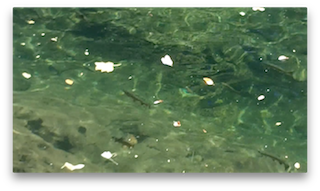
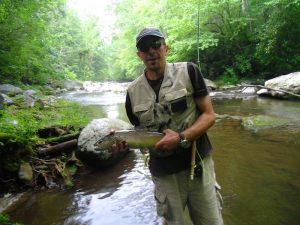
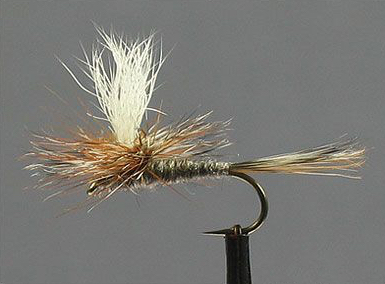
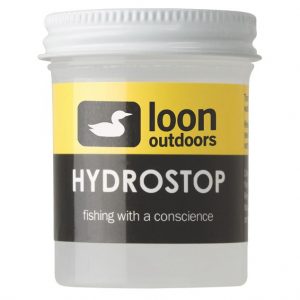 While many anglers use them in different ways, liquid floatants are probably most useful before you ever get to the stream. Whether dry flies that you tie yourself or buy from a shop, you can use a liquid style floatant to “pre-treat” new flies in much the same way as you might “Scotchgard” your sofa. Exact application may vary and you should read the recommendations for the specific brand you purchase, but typically, flies will be soaked in the liquid for five minutes or so and then set out to dry overnight. In theory, after application of the product, water will better bead and roll of the fly material rather than absorb into it.
While many anglers use them in different ways, liquid floatants are probably most useful before you ever get to the stream. Whether dry flies that you tie yourself or buy from a shop, you can use a liquid style floatant to “pre-treat” new flies in much the same way as you might “Scotchgard” your sofa. Exact application may vary and you should read the recommendations for the specific brand you purchase, but typically, flies will be soaked in the liquid for five minutes or so and then set out to dry overnight. In theory, after application of the product, water will better bead and roll of the fly material rather than absorb into it.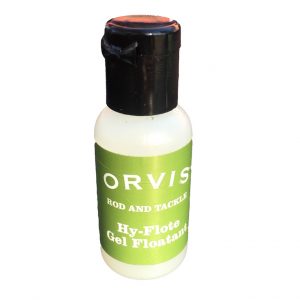 Gel floatants are probably the most common and popular style of floatant. They come in a small, very portable bottle and, like the liquid floatants, are designed to be a pre-treatment to an already dry fly. The big difference is gel floatants are designed to be used streamside, immediately before fishing the fly.
Gel floatants are probably the most common and popular style of floatant. They come in a small, very portable bottle and, like the liquid floatants, are designed to be a pre-treatment to an already dry fly. The big difference is gel floatants are designed to be used streamside, immediately before fishing the fly.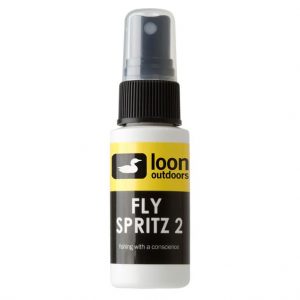 Also normally applied while the fly is still dry, spray floatants are basically just a variation on a gel floatant. Spray floatants come in a bottle with a pump top and are applied much like you would spray something like an eyeglass cleaner. They are not as messy as the gel but are sometimes more challenging to completey coat the fly.
Also normally applied while the fly is still dry, spray floatants are basically just a variation on a gel floatant. Spray floatants come in a bottle with a pump top and are applied much like you would spray something like an eyeglass cleaner. They are not as messy as the gel but are sometimes more challenging to completey coat the fly.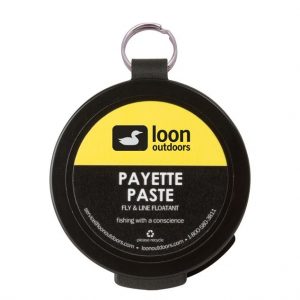 These are basically just a thicker version of a gel floatant. They can really create a mess on smaller dry flies and are probably best suited for larger dries like hoppers and stoneflies. A lot of people prefer a paste floatant to apply to yarn strike indicators or even on a leader to keep it floating better.
These are basically just a thicker version of a gel floatant. They can really create a mess on smaller dry flies and are probably best suited for larger dries like hoppers and stoneflies. A lot of people prefer a paste floatant to apply to yarn strike indicators or even on a leader to keep it floating better.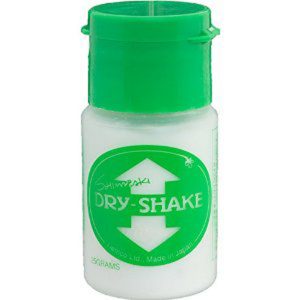 These are used less as a pre-treatment and more as a means to revive a saturated fly. As mentioned above, when a dry fly becomes oversaturated and begins to sink, applying a gel or spray can often make it worse by trapping moisture in. Powder floatants are used to absorb and remove that moisture from a fly.
These are used less as a pre-treatment and more as a means to revive a saturated fly. As mentioned above, when a dry fly becomes oversaturated and begins to sink, applying a gel or spray can often make it worse by trapping moisture in. Powder floatants are used to absorb and remove that moisture from a fly.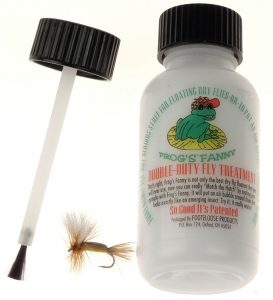 Brush floatants are essentially another version of a powder floatant. Rather than shaking the fly inside the bottle, a small brush is used to apply the powder to the fly. Again, it’s personal preference but with brush floatants, be prepared for a little frustration on windy days!
Brush floatants are essentially another version of a powder floatant. Rather than shaking the fly inside the bottle, a small brush is used to apply the powder to the fly. Again, it’s personal preference but with brush floatants, be prepared for a little frustration on windy days!